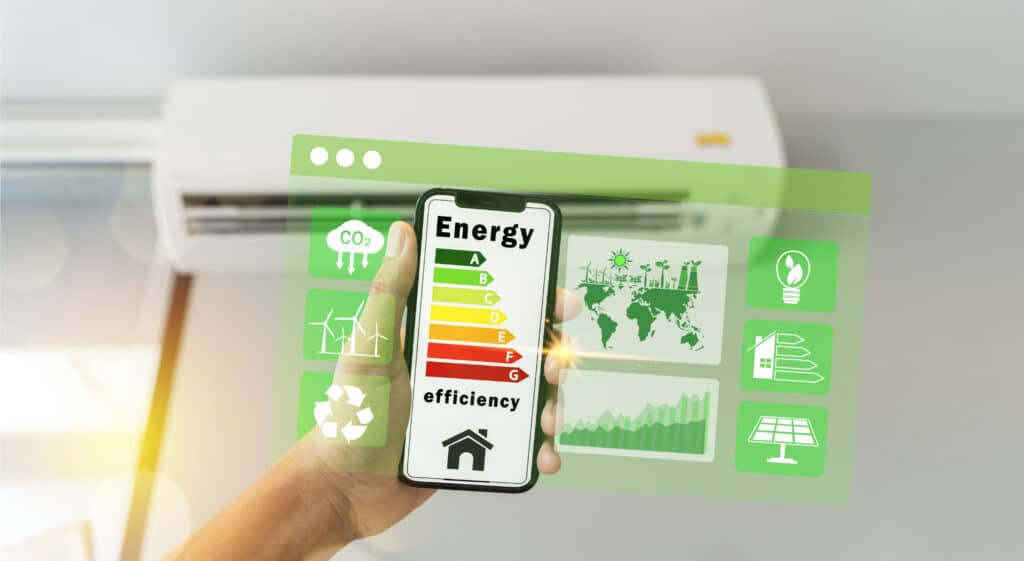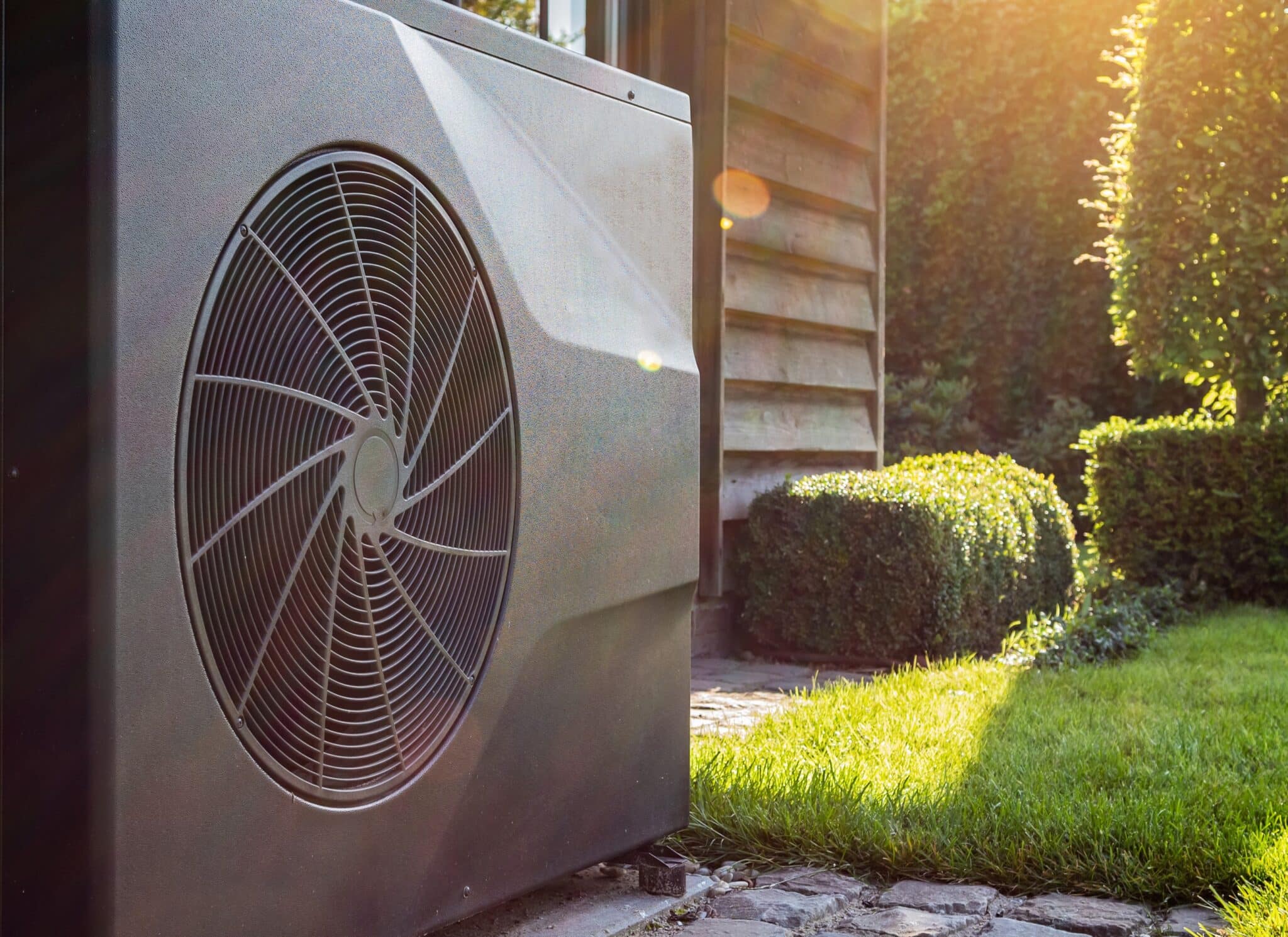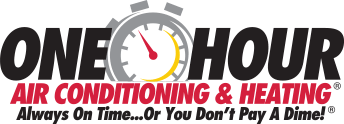
HVAC Efficiency Metrics: Understanding the Basics
When it comes to maintaining a comfortable home in Carrollton, Texas, understanding HVAC efficiency metrics is key. These metrics not only help homeowners in Addison, TX, gauge the performance of their heating and cooling systems but also offer insights into potential energy savings. By grasping the basics of HVAC efficiency metrics, residents in Double Oak, TX, can make informed decisions about upgrades or maintenance. This knowledge ensures that your system runs optimally, keeping your home comfortable year-round.
HVAC efficiency metrics are crucial indicators of how well your system is performing. They tell you how effectively your unit converts energy into heating or cooling for your home. For homeowners, this means a better understanding of these metrics can lead to improved comfort and lower energy bills. It’s all about finding the balance between maintaining an ideal home environment and managing energy consumption.
Improving these metrics doesn’t have to be a daunting task. Simple steps and regular maintenance can make a significant difference in your system’s efficiency. From regular filter changes to scheduling professional check-ups, each action contributes to better performance. These efforts not only enhance the efficiency of your HVAC system but also extend its lifespan.
Lastly, staying informed about HVAC efficiency metrics empowers homeowners to make smarter choices. Whether you’re considering a new installation in Carrollton or seeking to improve your current system in Addison or Double Oak, understanding these metrics is the first step. It’s about ensuring your home’s heating and cooling system meets your needs efficiently and effectively.
Understanding HVAC Efficiency Metrics
Understanding HVAC efficiency metrics starts with two primary measures: SEER and AFUE. SEER, or Seasonal Energy Efficiency Ratio, applies to air conditioning and heating systems. It measures how much cooling a system puts out for each unit of energy it uses. For residents in Addison, TX, a higher SEER rating means more efficient cooling during those hot summer months.
AFUE stands for Annual Fuel Utilization Efficiency, which is used to evaluate the efficiency of a heating system. It calculates the percentage of fuel converted into heat versus the amount wasted. In cooler areas like Double Oak, TX, a furnace with a high AFUE rating will keep homes warm more efficiently. This metric is crucial for understanding how well your heating system performs in colder weather.
Another important metric is the HSPF, or Heating Seasonal Performance Factor, for heat pumps. It measures the efficiency of the heating mode of heat pumps. The higher the HSPF rating, the more efficiently the heat pump heats your home. This metric is especially relevant for homeowners who rely on heat pumps for both heating and cooling.
Lastly, understanding these HVAC efficiency metrics allows homeowners to make informed decisions about their systems. Knowing what these numbers mean can help you choose more energy-efficient models that match your home’s needs. Regular maintenance and informed choices can lead to significant improvements in your HVAC system’s performance, ensuring comfort in your home throughout the year.
The Importance of SEER Ratings for Cooling Systems
In the realm of HVAC efficiency metrics, SEER ratings hold a pivotal role, especially when it comes to cooling systems. This measure is a direct reflection of how effectively an air conditioner can cool your home in Addison, TX, using the least amount of energy. Homeowners who prioritize SEER ratings when selecting a new system or upgrading an existing one can enjoy enhanced comfort. Moreover, a system with a high SEER rating operates more efficiently, making it a smart choice for those looking to improve their home’s energy usage.
Understanding the significance of SEER ratings can also lead to more environmentally friendly decisions. By opting for systems with higher SEER ratings, residents in Double Oak, TX, contribute to reducing energy consumption. This not only benefits their own household by fostering a more comfortable living environment but also aids in the broader effort to conserve energy. Consequently, a higher SEER rating not only signifies a more efficient cooling system but also reflects a commitment to environmental stewardship.
Regular maintenance plays a crucial role in maintaining or even improving the SEER rating of your HVAC system. Simple actions like cleaning or replacing air filters ensure that your system runs at peak efficiency. For homeowners, this means that the energy efficiency of their cooling system remains optimal, which is critical during the hot summer months. Engaging in regular maintenance ensures that your system’s SEER rating translates effectively into real-world performance.
Lastly, the quest for higher HVAC efficiency metrics, such as SEER ratings, underscores the importance of making informed choices. Whether you’re in the market for a new system or seeking to optimize your current setup, understanding these metrics guides you towards making decisions that enhance comfort and efficiency. It empowers homeowners to select systems that not only meet their cooling needs but also align with their energy-saving goals.

How AFUE Measures Heating Efficiency
As we delve deeper into HVAC efficiency metrics, it’s essential to highlight how AFUE stands as a cornerstone for measuring heating efficiency. This metric shines a light on how well your furnace or boiler converts gas or oil into heat for your home, making it a critical factor for residents in Addison, TX, seeking to enhance their heating systems. By aiming for a heating system with a high AFUE rating, homeowners can enjoy a warmer living space more efficiently. This approach not only optimizes energy use but also supports a more comfortable and consistent indoor climate during the colder months.
Understanding AFUE ratings empowers homeowners to make educated decisions about their heating systems. It provides a clear metric to compare the efficiency of different furnaces and boilers. For those living in cooler climates like Double Oak, TX, selecting a heating system with a superior AFUE rating can lead to improved warmth and comfort. This knowledge ensures that homeowners can choose heating solutions that align with their efficiency goals and household needs, fostering a more energy-smart and comfortable living environment.
Regular maintenance is pivotal in maintaining the efficiency of your heating system as indicated by its AFUE rating. Simple steps, such as scheduling annual inspections and ensuring your heating system is clean, play a significant role in preserving its efficiency. These actions help prevent the decline of AFUE performance over time, ensuring your system operates at its best. Homeowners who prioritize maintenance enjoy the dual benefits of optimal heating efficiency and prolonged system lifespan, making it a wise approach for anyone looking to maximize their home’s warmth and energy use.
Lastly, the pursuit of high HVAC efficiency metrics, including AFUE ratings, underscores the importance of staying informed and proactive about your heating system. For homeowners, this means regularly assessing your system’s performance and being open to upgrades or maintenance that can boost efficiency. By understanding and acting on these metrics, you can ensure your heating system not only meets your comfort needs but does so in the most energy-efficient manner possible, enhancing both comfort and efficiency in your home.
Exploring HSPF: The Heat Pump Efficiency Indicator
Exploring the realm of HVAC efficiency, the HSPF rating emerges as a key indicator for heat pumps. This metric, standing for Heating Seasonal Performance Factor, quantifies the efficiency of heat pumps in heating mode. For homeowners in Addison, TX, a high HSPF rating means their system heats the home more efficiently. This efficiency not only ensures a warm, comfortable environment but also supports smarter energy use.
Heat pumps serve as a dual-function system, providing both heating and cooling. This makes the HSPF rating especially significant for residents in climates that experience a wide range of temperatures. In Double Oak, TX, where the weather can vary, selecting a heat pump with a high HSPF rating can lead to enhanced comfort year-round. It’s a choice that optimizes energy consumption while maintaining an ideal home temperature.
Maintaining your heat pump is crucial to preserving its HSPF performance. Regular maintenance tasks, such as cleaning the unit and checking for any issues, help keep it running efficiently. For homeowners, this means the heat pump will consistently meet its efficiency potential, ensuring that the home remains comfortable regardless of the season. These actions safeguard the system’s efficiency and prolong its service life.
Understanding HSPF and other HVAC efficiency metrics empowers homeowners to make informed decisions about their heating and cooling systems. It guides them in selecting equipment that aligns with their energy efficiency goals. For anyone looking to upgrade or maintain their HVAC system, prioritizing high-efficiency metrics can lead to significant improvements in comfort and energy usage. This knowledge is key to optimizing your home’s heating and cooling performance.

Tips to Improve Your HVAC Efficiency Metrics
Improving your HVAC efficiency metrics starts with a simple yet effective step: regular filter changes. A clean filter allows your system to breathe easier, reducing the strain on its components. This not only enhances the efficiency of your HVAC system in Addison, TX, but also improves the air quality in your home. Ensuring your filters are clean is an easy way to maintain optimal performance and efficiency.
Another tip is to invest in a programmable thermostat. This device adjusts your home’s temperature according to your schedule, ensuring that your system isn’t working hard when it’s not needed. Residents in Double Oak, TX, can benefit significantly from this upgrade. By optimizing your heating and cooling patterns, you can achieve better HVAC efficiency metrics without sacrificing comfort.
Sealing and insulating your home effectively is crucial for maintaining efficiency. Leaks around windows, doors, and ductwork can lead to significant energy loss. By addressing these issues, you can keep the conditioned air where it belongs, inside your home. This not only helps in achieving better HVAC efficiency metrics but also in maintaining a consistent temperature throughout your living space.
Lastly, scheduling regular maintenance checks with a professional is key to improving your HVAC efficiency metrics. A technician can spot issues that you might overlook, from minor leaks to inefficient settings. Regular check-ups ensure that your system in Addison, TX, is running as efficiently as possible. This proactive approach can lead to significant improvements in your HVAC system’s performance and longevity.
The Role of Regular Maintenance in HVAC Efficiency
Regular maintenance is crucial for keeping your HVAC system running smoothly and efficiently. By scheduling annual check-ups, homeowners in Addison, TX, can ensure their systems are performing at their best. These visits allow professionals to clean components, check for wear and tear, and make adjustments that improve overall efficiency. This proactive approach not only boosts HVAC efficiency metrics but also helps prevent unexpected breakdowns.
One often overlooked aspect of HVAC maintenance is the importance of duct cleaning and inspection. Over time, ducts can accumulate dust and debris, which can restrict airflow and reduce system efficiency. Residents in Double Oak, TX, can benefit from having their ducts inspected and cleaned regularly. This simple step can enhance the performance of your HVAC system, ensuring it heats and cools your home more effectively.
The role of the homeowner in maintaining HVAC efficiency cannot be understated. Simple tasks like replacing filters regularly, ensuring vents are not blocked, and setting thermostats appropriately can make a significant difference. These actions support the system’s efficiency, helping to maintain optimal HVAC efficiency metrics. By staying engaged with their HVAC system’s upkeep, homeowners play a vital part in its performance and longevity.
Lastly, understanding the signs that your HVAC system may need professional attention is key. Unusual noises, inconsistent temperatures, or an unexpected increase in energy bills in Addison, TX, could indicate that your system is not operating efficiently. Addressing these issues promptly with the help of a professional can restore your system’s efficiency, keeping your home comfortable and your HVAC efficiency metrics on target.
Upgrading Your System for Better HVAC Efficiency Metrics
Considering upgrading your HVAC system is a proactive step toward better energy efficiency in your home. Newer models come equipped with advanced features that optimize HVAC efficiency metrics, leading to more effective heating and cooling. For homeowners in Addison, TX, selecting a system with higher efficiency ratings can significantly improve comfort levels. These upgrades also contribute to a more environmentally friendly household by reducing energy consumption.
In Double Oak, TX, where temperatures can fluctuate, having a system that responds efficiently is crucial. Upgrading to a unit with a high SEER or AFUE rating ensures that your HVAC system uses less energy to maintain your desired indoor climate. This not only makes your home more comfortable but also supports the overall performance of your HVAC system. Enhanced efficiency metrics mean your system works less while delivering the same level of comfort.
Homeowners should also consider the benefits of adding smart thermostats and zoning capabilities during an upgrade. Smart thermostats learn your schedule and adjust temperatures accordingly, improving your home’s HVAC efficiency metrics. Zoning systems allow you to control the temperature in different areas of your home independently, which can lead to significant energy savings. These technologies work together to ensure your HVAC system operates at peak efficiency.
Finally, consulting with a professional before making any upgrades is essential. They can assess your current system and recommend improvements tailored to your specific needs. This ensures that any upgrades align with your goals for enhancing HVAC efficiency metrics. By taking these steps, homeowners can achieve a balance between maintaining a comfortable home and optimizing energy use, making their HVAC system more efficient and effective.
Smart Thermostats: A Tool for Enhancing HVAC Efficiency
Smart thermostats have revolutionized the way homeowners in Addison, TX, manage their HVAC systems. By learning your schedule and adjusting temperatures accordingly, these devices play a pivotal role in enhancing HVAC efficiency metrics. This intelligent technology ensures your system operates only when needed, reducing unnecessary energy use. As a result, homeowners enjoy a comfortable living environment without excessive energy consumption.
In Double Oak, TX, the benefits of smart thermostats extend beyond just personalized scheduling. These devices also provide valuable insights into your energy usage patterns. By understanding how and when you consume energy, you can make informed decisions to further improve your HVAC efficiency metrics. This level of insight empowers homeowners to optimize their heating and cooling systems for maximum efficiency.
Moreover, smart thermostats are designed to be user-friendly, offering remote control via smartphones or tablets. This convenience allows homeowners to adjust their HVAC settings from anywhere, ensuring their homes are always comfortable upon arrival. The ability to control your HVAC system remotely contributes to maintaining optimal efficiency metrics, ensuring energy is used wisely.
Lastly, integrating smart thermostats into your HVAC system is a straightforward process that offers long-term benefits. Homeowners who embrace this technology find that improving their HVAC efficiency metrics is easier than ever. With the right setup, achieving a balance between comfort and energy efficiency becomes a seamless aspect of home management. Smart thermostats stand as a testament to how modern technology can enhance the performance and efficiency of your HVAC system.
Frequently Asked Questions
What are HVAC Efficiency Metrics?
HVAC efficiency metrics are key indicators of how well your heating, ventilation, and air conditioning system operates. These metrics help homeowners understand energy usage and performance levels. By improving these metrics, you can ensure your system runs more efficiently. This, in turn, enhances home comfort and could reduce energy consumption.
How do I improve my HVAC system’s efficiency?
Improving your HVAC system’s efficiency begins with regular maintenance checks. Ensuring filters are clean and airflow is unobstructed can greatly enhance performance. Additionally, upgrading to a programmable thermostat allows for better control over heating and cooling. Lastly, consider professional inspections to identify and fix any inefficiencies, boosting overall system effectiveness.
What role do HVAC Efficiency Metrics play in savings?
HVAC efficiency metrics are crucial for maximizing savings in your home. They guide you in understanding how energy-efficient your system is, leading to potential reductions in energy use. By optimizing these metrics, your system requires less power to heat or cool your home effectively. This results in lower energy bills and contributes to a more environmentally friendly household.
What is SEER rating in HVAC systems?
The SEER rating measures an HVAC system’s cooling efficiency over a typical cooling season. It stands for Seasonal Energy Efficiency Ratio. A higher SEER rating means the system operates more efficiently. Homeowners benefit from understanding this metric to choose energy-efficient cooling options.
How often should HVAC systems be evaluated for efficiency?
HVAC systems should be evaluated for efficiency at least once a year. This regular check-up ensures they are running at peak performance. During these evaluations, professionals can spot and address any issues. Keeping your system in top shape helps maintain optimal HVAC efficiency metrics.







